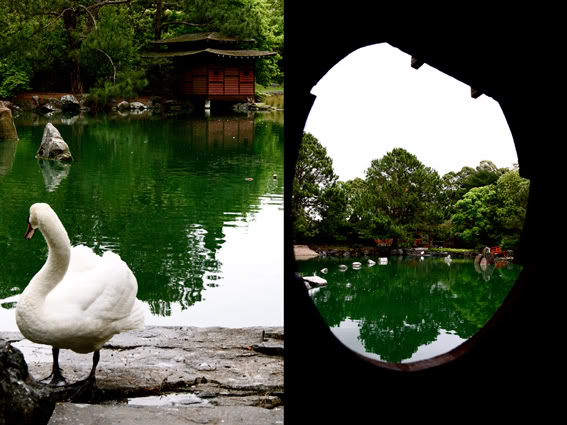The Dictionary of Sydney was archived in 2021.
Auburn Botanic Gardens
Citation
Persistent URL for this entry
To cite this entry in text
To cite this entry in a Wikipedia footnote citation
To cite this entry as a Wikipedia External link
Auburn Botanic Gardens
[media]The Auburn Botanic Gardens attract thousands of visitors each year, including a significant number from outside Australia. Families and tourists enjoy the picnic and barbecue areas throughout the week, but even on busy days, quiet corners can be found. The central formal area – with reflection pool, pergola and sunken rose garden – has flowers and blossoms through the year.
The topography of the site, which slopes gently towards the Duck River, has been altered to create interesting perspectives and microclimates. Three habitats provide an experience of 'Australia' in the city – the woodlands theatre, the native garden and billabong, and the Australian rainforest. The Japanese gardens and hill are favourite venues for weddings and even attract couples from overseas. [1]
The gardens were opened by the New South Wales governor Sir Roden Cutler on 11 September 1977. [2] Local residents are very proud of 'their' gardens, which were designed by Eric Black, chief engineer of Auburn Municipal Council from 1949 to 1979. Community groups have added a bonsai garden and an aviary to the basic plan. The native fauna reserve, set up in consultation with Taronga Zoo, is a later addition by the council's parks and gardens department. [3]
The gardens owe their origin to the Cumberland Planning Scheme (1946–1951) which set aside the area along the banks of the Duck River for recreation. Both before and after the scheme, the council dumped rubbish and sewage along the banks and in brick and tile clay-pits for many years. In July 1968, Black presented a detailed report to the council on proposing a mixture of sporting grounds and intensive cultivation of the Duck River parklands. Black envisaged a series of gardens representing national styles from around the world. This vision was later reduced, though some elements survived, including the Japanese gardens and lake, the formal gardens and reflection pool, and the different Australian habitats. [4]
The next crucial step was when the Whitlam Government (1972–1975) pioneered federal government recognition of local government through direct funding. Through the regional development program, Auburn Council received funding in 1974 and 1975–76 to develop the gardens.[5]
The gardens have matured since their opening, to the extent that some areas have had to be replanted after maturing trees and plants came to the end of their life cycles. The New South Wales National Parks and Wildlife Branch of the Department of Environment and Climate Change has identified the gardens as part of the recovery plan for certain environments and species, including Cooks River clay plain scrub forest, Acacia pubescens (downy wattle) and Wahlenbergia multicaulis (Tadgell's bluebell). [6]
Notes
[1] Auburn Council, Auburn Botanic Gardens: plan of management, Auburn Council, Auburn, NSW, 2001
[2] Liberty Plains: a history of Auburn, NSW, centenary edition. Auburn Municipal Council, 1992, p 324
[3] Auburn Council, Auburn Botanic Gardens: plan of management, Auburn Council, Auburn, NSW, 2001
[4] Local History files held in Auburn Library
[5] Local History files held in Auburn Library
[6] Auburn Council, Auburn Botanic Gardens: plan of management, Auburn Council, Auburn, New South Wales, 2001



